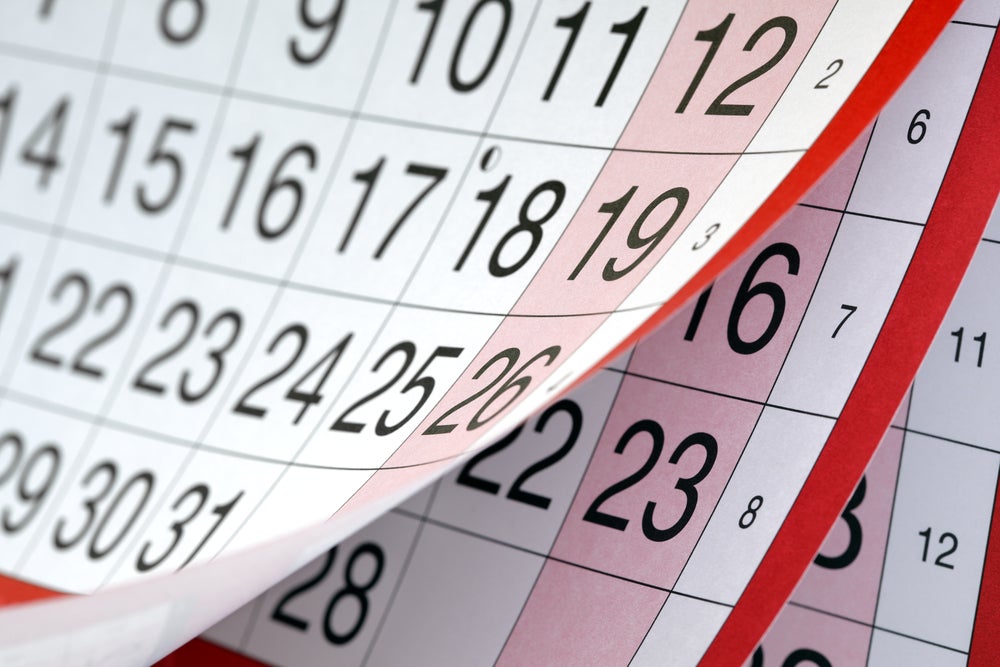Rookie In Training: Planning Your Race Schedule

Photo: <a href=http://shutterstock.com>Shutterstock.com</a>
Every Wednesday in “Rookie in Training,” beginner triathlete Jason Devaney will share training advice he learns as he trains for his first half-Ironman.
Choosing which races to do is sort of like learning the A-B-Cs.
There’s your A race, the main focus of your season. B races are secondary and allow you to get in some racing and work out the kinks. And if you want to go even further, add a few C races to your schedule.
Each of these races has a purpose. And they’re all important.
That’s not to say that a new triathlete can’t just do one race in their first year. That’s perfectly fine. But doing more races in the leadup to your main event will make you better.
To novice triathletes, most aspects of the sport are brand new. Open-water swimming, transitions, handling a bike at a high rate of speed, and running on tired legs can be uncomfortable.
If the first time you put them all together is on the day of your big race, things could go wrong.
That’s where scheduling secondary races come in.
As I wrote a few months ago, this isn’t my first year competing in triathlon. I did two sprint races in 2009. But I was a total rookie and, to be honest, didn’t have a clue what I was doing.
RELATED: How To Plan A Fun And Successful Triathlon Season
This year, I’m taking a much different approach.
Aside from being more fit in all aspects of the sport, I’ve scheduled a handful of races ahead of my A race — a half-Ironman next month. The first one, in late May, was a short sprint. The second was a longer sprint a few weeks ago.
The next one on my schedule is in about four weeks, an Olympic–distance race. I also ran a 5K two months ago and I’m looking at a few other short races coming up.
I’m not so much focused on time in any of these tuneup races as I am the whole process. At the end of each event I evaluated how things went, what I can work on, etc.
It’s a much smarter plan of attack than what I did a few years ago.
Professional triathlete Jesse Thomas wrote about how he plans his race season a few months ago.
“Working backward from my goal race, the next thing I add is a tune-up race,” Thomas wrote. “To me, that means a solid race four to six weeks ahead of my goal. Ideally, that’s a good effort race, but with a little less pressure, and it leaves enough time to test, evaluate and make a few adjustments to my training before going into the final stage of the season.”
If your target race for the season is an Olympic-distance triathlon, schedule one or two sprint-distance races leading up to it. Some examples of C races would be one or two 5Ks, a 10K, and perhaps even a swim meet — in the pool or in open water.
If you’re not able to schedule any official races outside of your main event, you could simulate one by doing a “triathlon” on your own in lieu of a weekend workout. Try swimming 500-800 meters at your pool, and follow it up with a 15-mile bike ride and a 5K run.
At the very least, you’d be the first rider to finish.
Anyone racing this weekend? Send me a Tweet with your results.
Jason Devaney is a freelance contributor to Triathlete.com, VeloNews.com and Competitor.com. A resident of Virginia, he spends way too much of his free time training. When he’s working, he’s typically dressed in either sweatpants or a cycling kit. Follow him on Twitter @jason_devaney1.
Looking for a triathlon to sign up for this year? Check out our partner, the TriRock Series. Their eight events feature a fun atmosphere for triathletes of all levels.